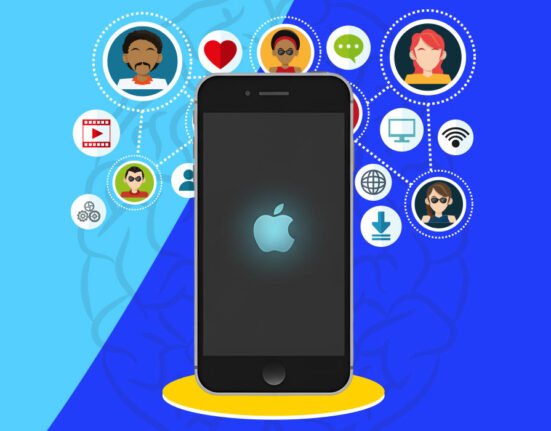As the calendar turns to June-July, many people experience a distinct drop in energy and excitement. This phenomenon is known as the “mid-year slump”, which is characterised by low motivation, performance, and innovation. Understanding the underlying psychological principles and executing effective tactics will help us rekindle our motivation and transform this time into a chance for advancement.
Understanding the Mid-Year Slump
A complex interaction of psychological elements contributes to the mid-year slump, which is more than just a passing sensation of exhaustion. Research states that motivation levels often exhibit a ‘U-shaped pattern’ throughout the year, falling noticeably in the middle and peaking at the start and finish. There are several reasons for this decrease:
- Expectation and Self-Attribution: At the beginning of the year, people could have high hopes. When these expectations aren’t met, progress may result in self-doubt and a drop in motivation, causing decreased work efficiency.
- Emotional and Psychological Symptoms: During this time, feelings of annoyance, worry, and self-focus may worsen, making the slump even worse.
- Shift in Attention: A shift from automatic to conscious monitoring may cause flow problems and reduce productivity.
Poor marks and possible dropout result from students’ frequent indifference, inertia, and failure to finish work in academic contexts. Midlife stress can also cause emotional numbness and depersonalization in professionals, just as it may lead to apathy, stagnation, and failure to complete assignments in students, resulting in low grades and potential dropouts.
Psychologists Weigh In
Are there any simple daily habits that can help maintain consistent energy throughout the year?
According to Counselling Psychologist Avanti Desai, Mental cleanse rituals are essential for sustaining steady energy throughout the day and over time. When your mind is cluttered with unfinished thoughts, worries, and overstimulation, it quietly drains your focus and vitality. A simple practice like journaling acts as a daily mental release valve—emptying the noise, clarifying what truly matters, and freeing up mental bandwidth. Breathwork, even just for a few minutes, slows your system down and helps reset your internal rhythm.
These rituals don’t just calm you; they prevent burnout by creating space for stillness, reflection, and emotional regulation—all of which are crucial for maintaining long-term energy and clarity. Digital detox, in the same way, protects your energy by reducing the constant pull on your attention. Every notification, scroll, or update may seem small, but it fragments your focus and, over time, leads to fatigue, restlessness, and overstimulation.
Taking intentional breaks from screens—like turning off non-essential alerts, choosing phone-free hours, or having a screen-free start to the day – restores your nervous system and helps you reconnect to your natural pace. By limiting digital noise, you conserve mental energy, sharpen focus, and create space for deeper rest and more meaningful engagement with your life.
Is mid-year slump a common experience? Why does it happen?
According to Consultant Clinical Psychologist Subasasna Kashyap, Slump, or, putting it another way, fatigue is an outcome of multiple factors and can deteriorate day-to-day functioning at various times in a year. Specifically, mid-year slump or mid-year fatigue is a tiredness, reduced interest in functioning. It can be a result of either physiological factors, psychological factors or a combination of both. For example, mid-year is accompanied by a seasonal change in terms of temperature, precipitation and an unpredictability in weather, which might create a slump due to physical health related concerns. Another example is psychological factor, such as, not being able to achieve half-yearly goals as set during a year’s initiation. These factors, creates a mid-year slump and as an outcome, one might have diƯiculty in functioning adequately. Management of the same involves finding out the root causes and taking professional help and get the right management approaches.
Common Signs and Emotional Experiences
Recognising the signs of a mid-year slump is the first step towards overcoming them. Key signs include:
- Slowed Thinking and Reduced Alertness: Individuals may find it difficult to concentrate, with mental tasks requiring more time and effort. This cognitive fog can cause poor decision-making and lower productivity.
- Emotional Exhaustion: Persistent feelings of being emotionally drained are common. People may feel “on edge” or overwhelmed by even minor responsibilities, leading to disengagement from work or studies.
- Social Withdrawal and Loneliness: People tend to isolate themselves, avoiding both personal and professional interactions. This can worsen feelings of disconnection and lead to a lack of emotional support during challenging times.
- Increased Depressive Feelings: A pervasive sense of sadness, hopelessness, or low self-worth may emerge. This emotional downturn, if prolonged, can mimic or exacerbate symptoms of clinical depression.
These symptoms are often intertwined with stress, burnout, and poor emotion regulation, especially during high-pressure periods like academic midterms or demanding work cycles.
Effective Strategies to Reignite Motivation
Overcoming the mid-year slump requires intentional strategies that address both psychological and environmental factors. Here are eight evidence-based approaches:
1. Reconnect with Your “Why”
Reconnecting with our core motivations can reignite passion and drive. The Self-Determination Theory emphasises the relevance of autonomy, competence, and relatedness in developing intrinsic motivation. Reflect on our initial goals and values to realign our efforts with our mission.
2. Break Down Goals into Smaller Wins
Achieving small, incremental goals can boost confidence and maintain momentum. The “progress principle” suggests that recognising and celebrating minor achievements can significantly enhance motivation and engagement.
3. Shift Your Environment
Altering our physical workspace can have a profound impact on our mental state. Environmental psychology research suggests that factors like lighting, colour, and layout influence cognitive performance and well-being. Consider reorganising your space or introducing elements that inspire creativity and enhance work efficiency.
4. Practice Time-Based Goal Setting
Focusing on time-bound tasks rather than outcome-based goals can reduce pressure and enhance productivity. Implementing techniques like the Pomodoro Technique encourages sustained attention and regular breaks, promoting better time management and preventing burnout.
5. Goal vs. Reality Reflection
Mental contrasting involves envisioning a desired future and identifying obstacles that may hamper progress. This strategy, when paired with execution goals, has been demonstrated to increase goal commitment and achievement. Let’s assume you imagine graduating with honours (your ideal future). Then, you reflect on your current procrastination habits (present reality). This “contrast” or the gap between where you are and where you want to be motivates you to take action.
6. Pursue Personal Mastery
Adopting a mastery-oriented mindset focuses on personal growth and learning rather than external validation. Research by Dweck highlights that individuals with a mastery orientation are more resilient and adaptable in the face of challenges. Instead of aiming to get the highest score in class, a mastery-oriented student focuses on understanding the material deeply, improving with each test, and embracing feedback to grow.
7. Include Strategic Breaks
Instead of pushing through exhaustion, a student plans 30-minute intervals between study sessions to walk, nap, or meditate, allowing him to return refreshed and focused. Including intentional break intervals in our routine can help avoid burnout and improve general well-being. Research shows that taking regular breaks improves cognitive performance and productivity. Engage in relaxing activities like meditation or leisurely walks.
8. Find a Goal Buddy
Connecting with others can provide encouragement and accountability. Bandura’s concept of self-efficacy emphasises the role of social support in building confidence and motivation. Engage with peers, mentors, or support groups to share experiences and strategies.
Turning the Slump into an Opportunity for Growth
The mid-year slump, while exhausting, can be a significant turning point. This slowdown encourages a rare opportunity to take a step back, reassess progress, and reconnect with purpose. Rather than rejecting the slowness, leaning into it with curiosity empowers people to discover what is genuinely important. It’s time to review your goals: Which ones still align? Which needs to be refined? Adopting new habits, such as writing, practising gratitude, or time blocking, may revitalise everyday routines. The downturn helps to build resilience by pushing people outside of their comfort zones. When embraced intentionally, it becomes a time to recharge and realign, making the way for lasting motivation.
Conclusion
If the year were a novel, this would be the middle chapter and not the conclusion or the climax, but the subtle turning point on which the whole story turns. Take a moment. Write yourself a note: “I’ve come this far. I’m pausing to breathe, recalibrate, but I’m not giving up.” This slump isn’t a period; it’s a comma, that’s a brief pause before your next chapter unfolds. Keep moving forward, because your journey is still unfolding and the best pages are yet to be written.
FAQs
Q1: Can a mid-year slump affect physical health as well as mental health?
A1: Yes. Stress and low motivation can lead to fatigue, sleep disturbances, and weakened immunity, impacting overall physical well-being.
Q2: Is the mid-year slump the same as burnout?
A2: Not exactly. A slump is often temporary and linked to motivation dips, while burnout is a chronic state of emotional and physical exhaustion due to prolonged stress.
Q3: How long does a mid-year slump typically last?
A3: It varies but generally lasts a few weeks to a couple of months, depending on the individual and circumstances.
Q4: Are certain personality types more prone to experiencing a mid-year slump?
A4: Yes. Perfectionists, high achievers, and those with high self-expectations may be more vulnerable due to increased pressure and self-criticism.
Q5: Should I seek professional help if I experience a severe mid-year slump?
A5: If feelings of sluggishness, sadness, or anxiety persist and interfere with daily life, consulting a mental health professional is recommended.
References +
- Bonezzi, A., Brendl, C. M., & De Angelis, M. (2011). Stuck in the middle: The psychophysics of goal pursuit. Psychological Science, 22(5), 607–612. https://doi.org/10.1177/0956797611404899
- Bolton, M. (2003). Overcoming inertia: Guiding criminal justice students through mid semester slump. Journal of Criminal Justice Education, 14(2), 355–370. https://doi.org/10.1080/10511250300085841Taylor&FrancisOnline+2isetl.org+2Tayl or & Francis Online+2
- Demiralp, E., Thompson, R. J., Mata, J., et al. (2012). Feeling blue or turquoise? Emotional differentiation in major depressive disorder. Psychological Science, 23(11), 1410–1416. https://doi.org/10.1177/0956797612444903PubMed
- Ryan, R. M., & Deci, E. L. (2000). Self-determination theory and the facilitation of intrinsic motivation, social development, and well-being. American Psychologist, 55(1), 68–78. https://doi.org/10.1037/0003-066X.55.1.68
- Amabile, T. M., & Kramer, S. J. (2011). The power of small wins. Harvard Business Review. https://hbr.org/2011/05/the-power-of-small-wins
- Evans, G. W., & McCoy, J. M. (1998). When buildings don’t work: The role of architecture in human health. Journal of Environmental Psychology, 18(1), 85–94. https://doi.org/10.1006/jevp.1998.0089
- Oettingen, G. (2012). Future thought and behaviour change. European Review of Social Psychology, 23(1), 1–63. https://doi.org/10.1080/10463283.2011.643698
- Dweck, C. S. (2006). Mindset: The new psychology of success. Random House.
- Pillay, S. (2018). The power of deliberate unfocus, rest, and daydreaming. Tracking Wonder. https://trackingwonder.com/podcast/episode-004/
- Bandura, A. (1997). Self-efficacy: The exercise of control. W.H.













Leave feedback about this